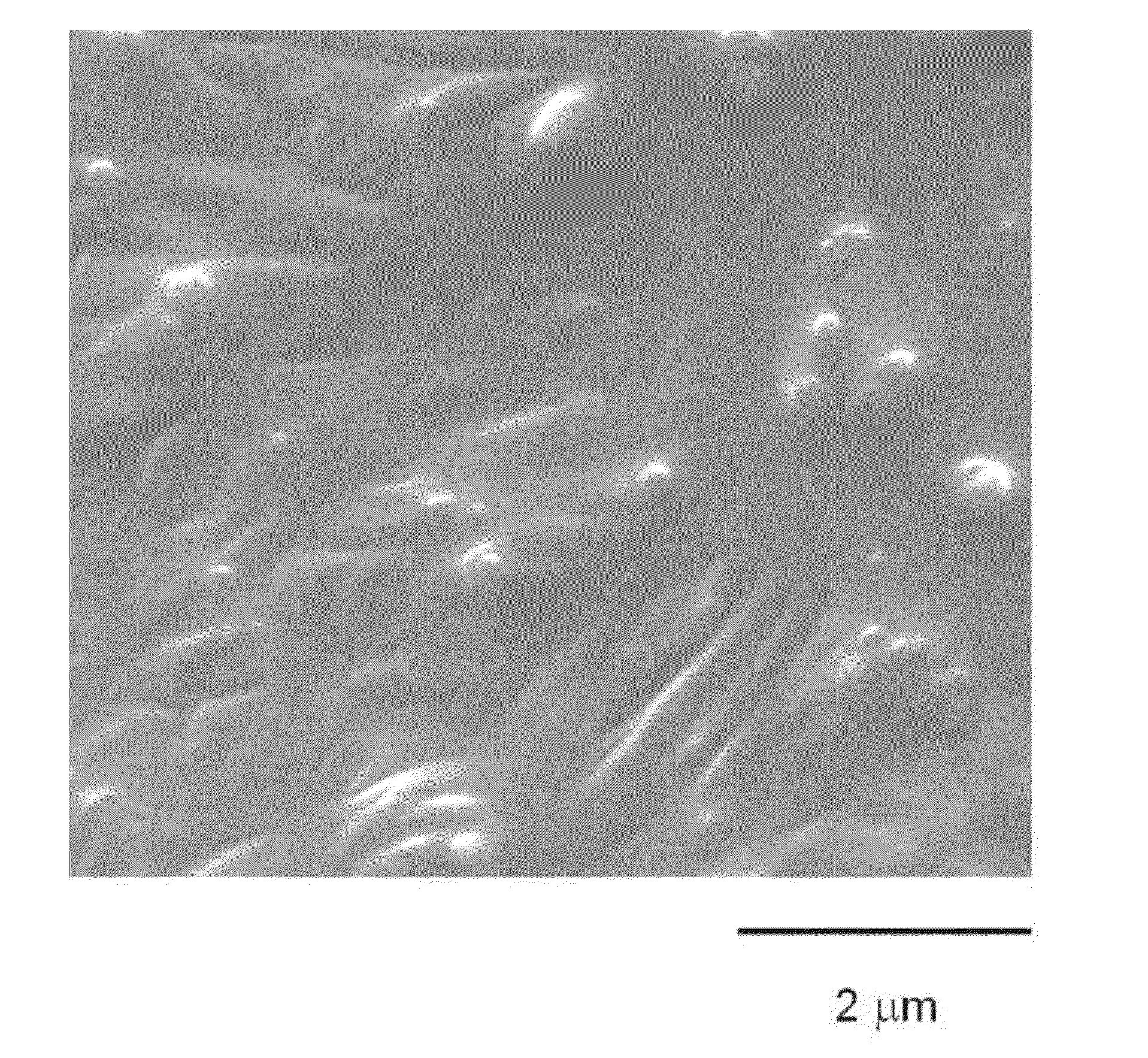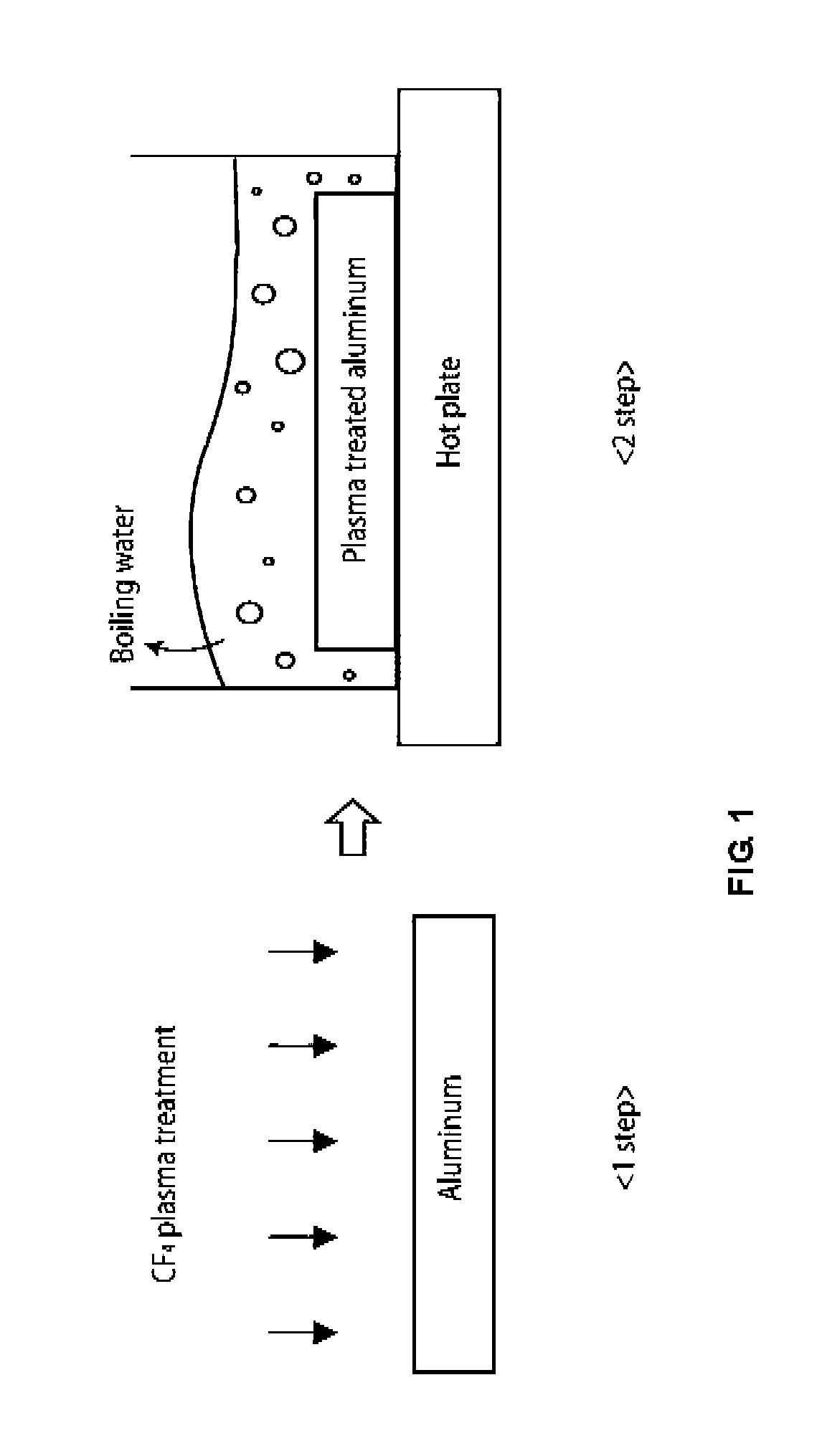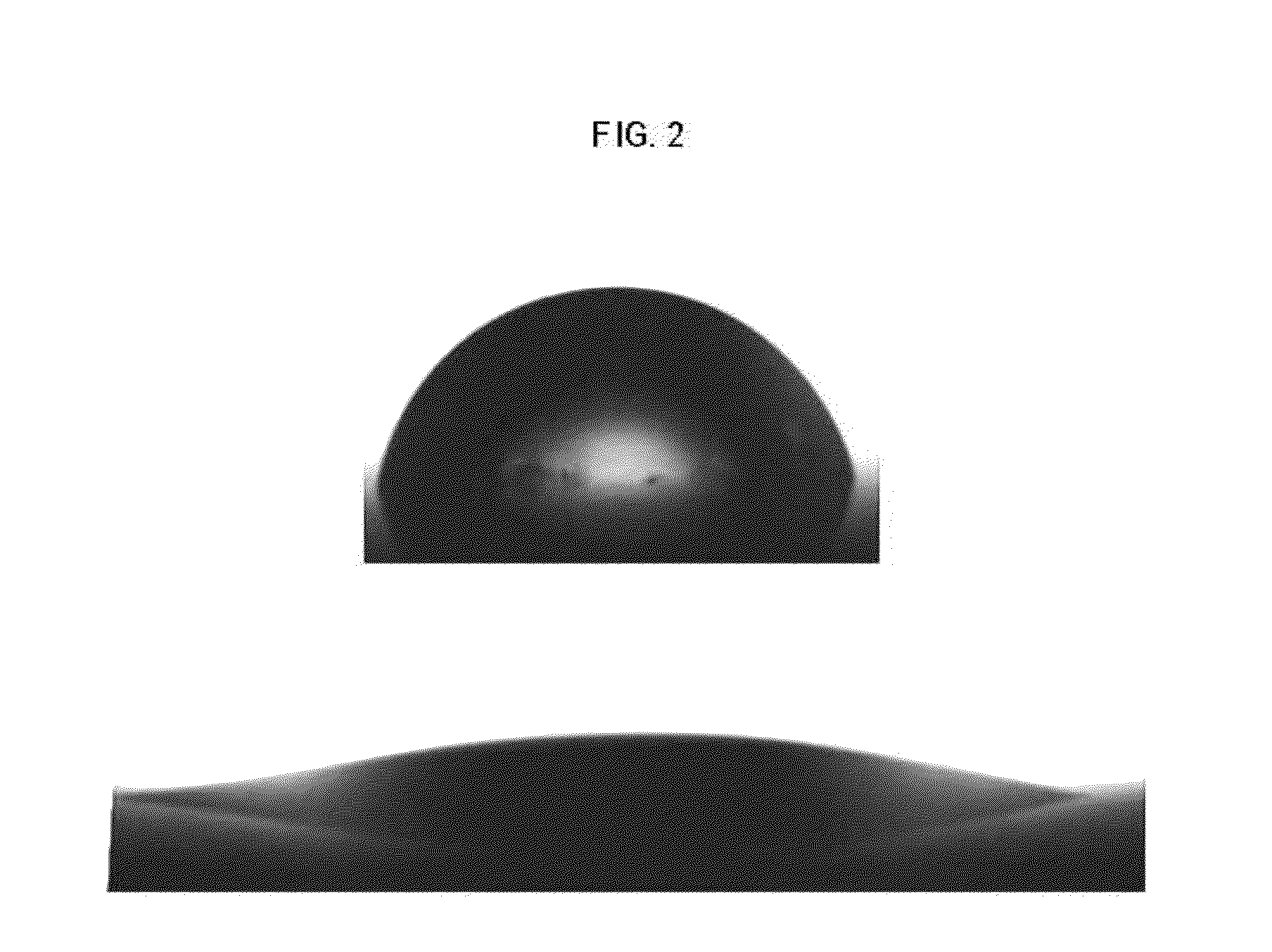Fabrication method for hydrophilic aluminum surface and hydrophilic aluminum surface body
a technology of hydrophilic aluminum and surface body, which is applied in the field of fabrication, can solve the problems of contaminating an environment, affecting the environment, and increasing the cost of a product, so as to achieve accurate control of coating process parameters, effective doping effect, and stably performing surface activity process
- Summary
- Abstract
- Description
- Claims
- Application Information
AI Technical Summary
Benefits of technology
Problems solved by technology
Method used
Image
Examples
example 1
[0071]Hereinafter, a method for fabricating a hydrophilic aluminum surface including nano-protrusion structures of a plate shape formed thereon according to a method for fabricating a hydrophilic aluminum surface will be described with reference to FIG. 1.
[0072]A surface of aluminum was activated by performing a plasma doping treatment thereon by using a CF4 gas as a reactive gas. An aluminum board having 99.9% purity was used, and r.f. PACVD was used for the plasma treatment. The aluminum board was treated 30 seconds under conditions in which etching pressure ranged from 2 Pa to 5 Pa and r.f. power ranged from 100 W to 300 W, to fabricate doped-aluminum in which an F element was doped on a surface thereof.
[0073]The doped-aluminum was put in boiling water, maintained for 10 minutes, and taken out of the water to fabricate aluminum having a hydrophilic aluminum surface including nano-patterns.
[0074]FIGS. 4 and 5 are electron microscope photographs of the hydrophilic aluminum surface ...
example 2
[0076]The surface of aluminum was hydrophilized in the same manner as that of Example 1. However, for the aluminum surface, plasma doping time was varied to 30 seconds, 1 minute, 10 minutes, and 30 minutes.
[0077]FIG. 6 shows an electron microscope photograph of the hydrophilic aluminum surface fabricated according to Example 2. It can be seen that the nano-protrusion structures were changed over time; when the treatment time was short, a wide and plate-shaped nano-structures were formed; when over 10 minutes passed, needle-shaped nano-structures, rather than plate-shaped nano-structures, appeared, and when 30 minutes passed, dot-shaped nano-structures were formed.
[0078]As can be seen from the results of Example 1 and 2, since the F element was doped on the surface of the doped-aluminum, when it reacts with water, a rapid oxidation occurs, and accordingly, needle-shaped or plate-shaped nano patterns are formed. Whether to form needle-shaped nano-protrusion structures, plate-shaped na...
example 3
[0079]The surface of aluminum was hydrophilized in the same manner as that of Example 1, except that conditions for doping were changed as shown in FIG. 8. Aluminum surfaces of respective samples were treated by differentiating plasma doping time as shown in FIG. 8, and pure water contact angles of the treated samples were measured.
PUM
| Property | Measurement | Unit |
|---|---|---|
| pressure | aaaaa | aaaaa |
| temperature | aaaaa | aaaaa |
| water contact angle | aaaaa | aaaaa |
Abstract
Description
Claims
Application Information
 Login to View More
Login to View More - R&D
- Intellectual Property
- Life Sciences
- Materials
- Tech Scout
- Unparalleled Data Quality
- Higher Quality Content
- 60% Fewer Hallucinations
Browse by: Latest US Patents, China's latest patents, Technical Efficacy Thesaurus, Application Domain, Technology Topic, Popular Technical Reports.
© 2025 PatSnap. All rights reserved.Legal|Privacy policy|Modern Slavery Act Transparency Statement|Sitemap|About US| Contact US: help@patsnap.com



